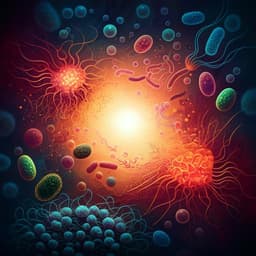
Medicine and Health
Exposure to multiple ambient air pollutants changes white matter microstructure during early adolescence with sex-specific differences
D. L. Cotter, H. Ahmadi, et al.
This research led by Devyn L. Cotter and colleagues reveals that air pollution has significant effects on white matter development in adolescents, with findings indicating that exposure to pollutants like PM2.5, NO2, and O3 during crucial developmental years can influence brain maturation processes differently across sexes. The study highlights alarming consequences of low-level pollution, which occurs even below current U.S. standards.
Playback language: English
Related Publications
Explore these studies to deepen your understanding of the subject.







